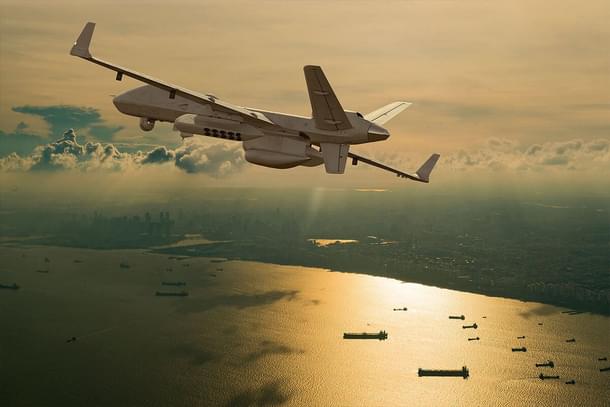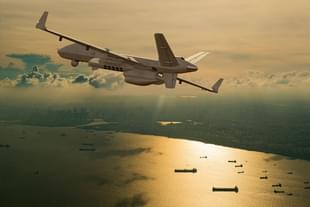Defence
Indian Navy To Equip Its MQ-9B Sea Guardian Drones With Sonobuoys, To Hunt Chinese Submarines Lurking In Indian Ocean
Ujjwal Shrotryia
Sep 27, 2023, 02:37 PM | Updated 06:59 PM IST
Save & read from anywhere!
Bookmark stories for easy access on any device or the Swarajya app.


The Indian Navy plans to equip the MQ-9B Sea Guardian medium altitude long-endurance (MALE) drones, which it is procuring from the United States, with sonobuoys, enhancing their ability to detect and track Chinese submarines lurking in the Indian Ocean Region (IOR).
India had earlier, in June, signed an agreement with the US-government to purchase 31 MQ-9 Sea and Sky Guardian drones for the three services.
Fifteen of the 31 drones are intended for the Indian Navy, while the remaining 16 (eight each) are designated for the Indian Air Force and Indian Army.
It is worth noting that the Navy already operates two MQ-9B Sea Guardian drones, since 2020, on lease from General Atomics (GA) — the drone's manufacturer.
In an interview with ANI, Lieutenant Commander Varsha, the first commander of the Guardian drones in the country, stated, "the new drones will be equipped with weapons, including air-to-ground missiles, bombs, and submarine detection kits fitted with sonobuoys which can help detect hidden enemy submarines."
The Lt. Commander was referring to the sonobuoy management and control system and sonobuoy dispensing system (SDS) that are part of the weapons package of the Guardian drones.
According to General Atomics, the drone can carry four SDS pods on its four wing pylons, allowing it to carry 40 'A' size or 80 'G' size sonobuoys.
A sonobuoy is a small device used for underwater acoustic surveillance. It contains hydrophones that detect underwater sounds, especially those made by submarines. These devices are deployed from aircraft or ships and transmit real-time acoustic data, helping pin-point potential submarine threats.
These systems, along with the P-8I long-range anti-submarine warfare aircraft, will enable the Navy to hunt Chinese and Pakistani submarines lurking deep in the IOR.
The Sea Guardian, with its 1,200 nautical mile range and significant on-station time, low maintenance, and low operating cost, can loiter over a designated area for a long time, deploying sonobuoys for locating submarines.
After the detection of a submarine, the P-8I, with its high speed, can reach the designated area in a short period and drop torpedoes.
These drones also have the ability to patrol the entire IOR in one go, owing to their 30-hour endurance and 4,000 to 8,000-kilometre range, stated Lieutenant Commander Lokesh Pandey, second in command of the Navy's drone unit.
Staff Writer at Swarajya. Writes on Indian Military and Defence.





